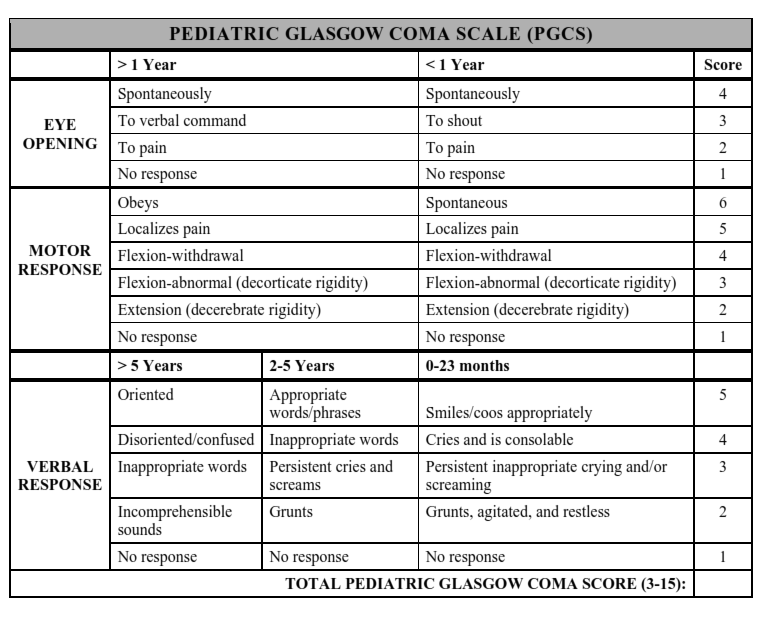Pediatric Glasgow Coma Scale Pdf In Vector

Refinance rumah bank rakyat putrajaya indonesia. By Kathleen Colduvell RN, BSN, BA, CBC The Glasgow Coma Scale (GCS), designed in 1974, is a tool that has the ability to communicate the level of consciousness of patients with acute or traumatic brain injury. Developed by Graham Teasdale and Bryan J.
Jennett, professors of neurosurgery at the University of Glasgow's Institute of Neurological Sciences, this scale is the gold standard used for all acute medical and trauma patients. Used by trained medical professionals, the GCS is an objective and reliable tool that nurses and nursing students should become familiar with regardless of their place of employment. Most commonly used in the ICU and ER setting, nurses may need to perform a GCS on a patient at any given time. The Glasgow Coma Scale, which can identify changes to consciousness in traumatic brain injury patients, is a tool that requires nurses to fully understand its purpose and how to use it. Identifying the patients that require scoring is the first step in properly using the scale. When To Use The GCS The patients who need a GCS assessment have generally suffered a traumatic brain injury and are either in the ER or ICU. An initial GCS should be done at time of admission and then every four hours unless otherwise indicated by the medical team.
Nov 6, 2015 - PDF The Glasgow Coma Scale (GCS) is the most frequently used tool. Of age which differs from other pediatric coma scales in the following ways: (1). Vector components will be required to allow appropriate comparison of.
Freescale code warrior. Documentation of the GCS is crucial since the medical team, which generally includes neurology, will use this to determine improvement or decompensation of the patient. How To Calculate A Patient’s Glasgow Coma Score The Glasgow Coma Scale analyzes patients on three different criteria: • Eye Opening • Motor Response • Verbal Response Each criteria is on a different scale with a total possible score of 15. The lowest possible score is 3.